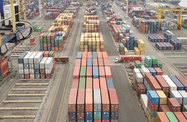Sabah’s economy is off to a strong start this year, owing to investments worth several billion ringgit secured in the first quarter of 2012, as well as an economic plan focused on creating wealth and empowering the business community.
To date, the Sabah Development Corridor (SDC), launched in 2008, has amassed a remarkable RM107bn ($34.87bn) in investments. These funds will sustain 31 entry point projects (EPPs), which are expected to generate RM35.5bn ($11.57bn) in incremental gross national income, along with roughly 144,000 new jobs, according to Musa Aman, the chief minister of Sabah.
These projects include: the Sabah Oil and Gas Terminal in Kimanis, which is projected to generate RM6.3bn ($2.05bn); the palm oil industrial cluster (POIC) in Lahad Datu, worth RM 8.6bn ($2.8bn); and coastal tourism development, expected to contribute RM8.6bn ($2.8bn). According to Muhyiddin Yassin, the Deputy Prime Minister, 92% of investments required for these projects would come from the private sector.
The SDC will also benefit from the newly launched RM4.7bn ($1.53bn) ammonia and urea plant in Sipitan. Prime Minister Najib Razak expects the new plant, commonly referred to as Samur, to have spin-off effects for many industries – such as agricultural chemicals, plastics, and pharmaceuticals – sparking a cycle of industrial growth.
Other projects in the SDC include the Gleneagles Medical Centre; the integrated Jesselton Waterfront and Sabah International Convention Centre in Kota Kinabalu; the International Technology and Convention Centre in Penampang; the Dalit Bay integrated tourism resort in Tuaran; the Sipadan Mangrove Resort; and the Sabah Green Energy geothermal power plant in Tawau. Costing nearly RM5.1bn ($1.66bn), the projects have received around RM500m ($162.93m) in federal funds.
Aman attributes the SDC’s strong standing to government efforts and the private sector’s overall confidence in the state. He drew attention to the initiatives of the Sabah Economic Development and Investment Authority (SEDIA) to endorse the government structure for EPPs, which then paved the way for SEDIA to become the one-stop authority for attracting, processing and tracking large investments.
Robust investments in the SDC dovetail nicely with the Malaysian state’s development policy. In early 2012, for example, the Sabah Progressive Party (SAPP) launched its economic plan for the state, with special emphasis on wealth creation and empowering the business community.
In introducing the plan, Mohd Noor Mansoor stated his party’s confident forecast that the state’s revenues could reach RM5bn ($1.63bn) by 2015. This figure does not include the 20% in petroleum royalties Sabah could potentially collect, thus giving it additional annual revenue of RM3bn ($977.56m).
“This budget will be able to sustain the momentum of Sabah’s development and [allow us] to save for the future. The revenue is expected to be derived by way of close monitoring of royalties on oil and gas, including those new, significant discoveries in shallow waters off Sabah, producing an additional 7bn standard cu feet per day,” Noor said.
Part of the government’s strategy toward wealth creation is to shore up savings and keep a close eye on the state’s debt. As part of the economic plan, the SAPP government has committed to depositing RM100m ($32.59m) each year into the Sabah Heritage Fund (SHF), created to be a “savings fund for future generations”. As well, the SAPP has resolved not to take any more sovereign loans that would pose a direct risk to the State Treasury upon the retirement of an RM544m ($177.26m) bond taken by the state administration in 2010.
However, Sabah still has a number of challenges to confront, including the challenge of how to better capitalise its agricultural sector, which has been slow to attract investments, contributing RM3.2bn ($1.04bn), or roughly 5.5%. This reality is more troubling in light of the fact that Sabah has a wealth of natural resources, such as oil and gas reserves, timber, oil palm, rubber and cocoa.
Notwithstanding these roadblocks, the future of Sabah’s economy looks bright. The strong support extended to the business community by the government provides great assurance for the private sector. Furthermore, with mega-projects in the works and large-scale investments continuing to pour in, there will be increased opportunities for job creation and infrastructural development, thus paving the way for a more inclusive growth.

